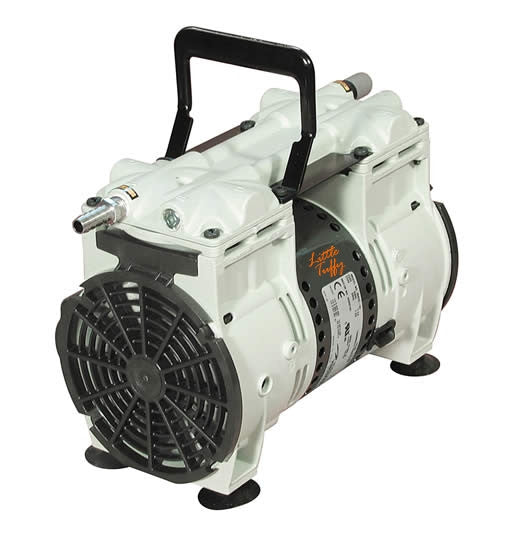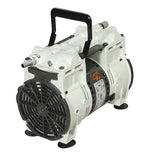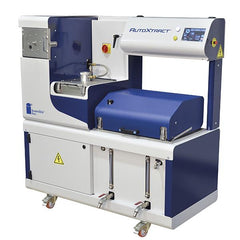LITTLE TUFFY Two-Stage Oilless Vacuum Pump, 115 volt
Little Tuffy Oil-Free Piston Vacuum Pump
HMA Item # VA-1200
115 V 60Hz
The Little Tuffy laboratory duty dry oil-free piston vacuum pumps are perfect for many common laboratory vacuum applications. The Little Tuffy offers a vacuum capacity equivalent to many oil systems. The 1/3hp motor pulls a vacuum to 29.6in Hg (759.46mm), with free-air displacement up to 65L/min (2.3cfm) and ultimate pressure of 9.0Torr.
- Portable 2-stage pump is resistant to water vapor
- Light & Inexpensive
- Easy to fix
- Replacement parts readily available
- Perfect for the Rice Test! AASHTO T-209 & ASTM D 2041
- No oil to change ever!
- Pump should be purged with air for 10 minutes at the end of each day of use
- Comes with 4” of tubing and a hydrophobic filter!
Features:
|
Free Air Displacement cfm (l/min.) @60Hz |
2.3 (65) |
|
Ultimate Pressure torr |
9 |
|
Maximum Vacuum (inches of Hg) |
29.6 |
|
Motor Horsepower (watts) |
1/3 (250) |
|
Tubing Needed, I.D. in. (mm) |
¼” (7) |
|
Intake/Exhaust Thread NPT |
¼ |
|
Weight lbs. |
16.5 |
|
Overall Dimensions L x W x H in. |
11.7 x 7.2 x 9.5” |
|
Ship Weight |
20 lbs. |
Trouble Shooting Tips for Little Tuffy
1). Make sure it’s the pump. When your pump won’t pull down to the 28-30mm of pressure needed to run the test many times it’s not the pump but a leak somewhere else in the system. Connect the pump directly to your digital vacuum gauge/manometer to check it. If the pump pulls down below the 28-30mm range – when they are new we see numbers in the 4-5-6mm range – then you most likely have a vacuum leak. At this point, start re-connecting the other components in your system – pycnometer, vapor traps/dewatering filters, etc., until you find the leak.
2). If it is the pump, many times it’s due to built up water vapor/blocked valves. Disconnect the pump from your system and let it run just pulling in room air for 20 to 30 minutes. In most cases, this will boil off the vapor/loosen the blocked valves and your pump should work fine. IT’S A GOOD HABIT TO LET THE PUMP RUN FOR 5-10 MINUTES BEFORE THE TEST AND AGAIN FOR 10-15 MINUTES AFTER THE TEST.
3). The exhaust muffler on the pump is actually a Porex filter. Over time, it can become coated with materials removed from the exhaust. Remove the filter and run the pump to see if your vacuum improves. If it does, you can sand off the outside of the filter to remove the buildup and restore the vacuum.
4). If Steps 1-4 do not restore the vacuum, it is time to get into the pump. Our experience has shown that replacing the seals/o-rings and leaf valves usually will correct the problems, and it’s the least-expensive option. If it turns out that the piston rings have deteriorated and are no longer sealing, then it’s necessary to install a minor service kit.





